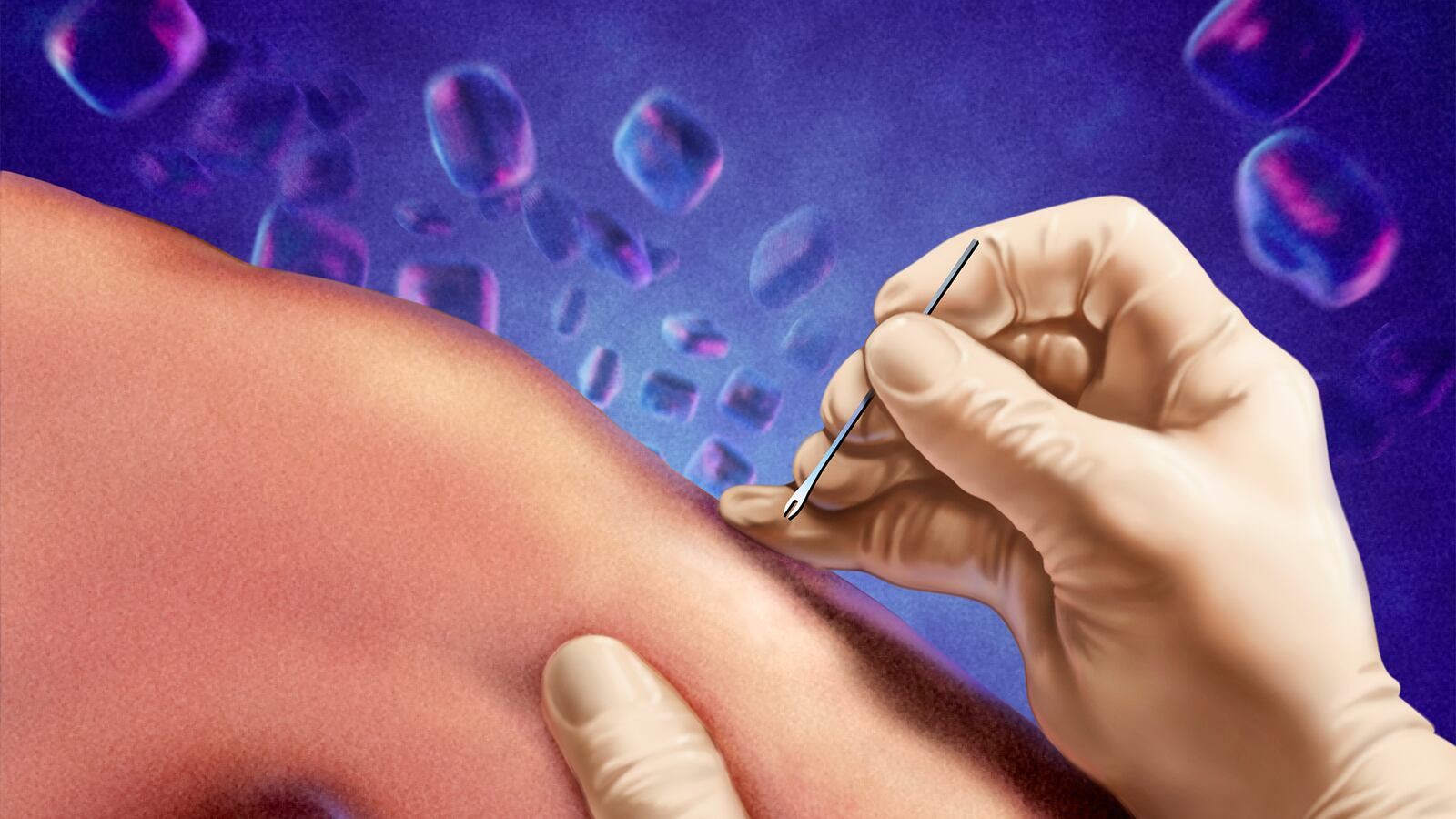One of the greatest innovations in medicine is, oddly, now among the ones attracting outsized skepticism in certain corners. In a word: vaccination.
Detractors, led by dubious science and anecdote, worry vaccines will do more harm than good. This is simply false, and dangerous. To understand why, it helps to understand the way our immune systems work in the first place.
This extraordinary science of the immune system is the topic of An Elegant Defense, my new book that looks at our defense network as we’ve come to understand it through hard-earned, brilliant science, and also through deeply intimate medical tales of people aided by immunology.
One tale in the book involves a cancer patient who rose from the grave thanks to immunotherapy. Another involves an HIV patient with such an extraordinary immune system it is studied by the National Institutes of Health. Two stories involve women with auto-immune disorders.They are connected by the network that runs through human health, the immune system. And that network depends on bedrock principles. One of them is that the immune system learns, and it must. This is why vaccines work.
Vaccines are a boot camp for the immune system. The inoculations prime and teach the immune system by priming cells in the immune system to recognize and develop defenses before someone faces deadly attack.
The reason that the immune system must learn in the first place is because the network, miraculous though it is, is not equipped to react immediately to a relative handful of viruses and bacteria that might harm us (most microbes are actually pretty friendly). Sometimes, the system can take days or weeks to mount an effective response and in cases of deadly disease, say, smallpox or certain flus, polio, measles, the natural process often will not suffice. You could well die, and many have.
Why isn’t the body equipped to react immediately? In some ways, this isn’t even the right question (the better question is: how can it react so well, so quickly to so many different threats? See chapter 12: The Infinity Machine). But, taking the question on its face – why isn’t the body equipped to react immediately – the answer has to do with the balances that must be struck by the immune system in the first place.
The immune system is often characterized as war machine, attacking every alien organism with zeal. This is not so. The immune system is actually more like a peace machine, seeking to create a harmonious relationship with the world around us. I think of the immune system as the love child of a bouncer and a ballet dancer, looking to defend us zealously, while treading lightly. After all, there are so many alien organisms in our midst – on us, around us, in us – that the immune system must take a diplomatic approach. If it sought to kill every potential threat, it would destroy us, and the world, in the process.
What that adds up to is that the immune system also takes some time to assess what it is dealing with – whether a major or minor threat, or one that can be dealt with through cooperation. Billions of cells in our body are bacteria, mostly in our gut, and we get along with them just fine.
In the end, there wind up being effectively two different immune systems. One is an immediate defense network that reacts in a generic way to infection. This is called the “innate immune system,”and it provides a stop-gap measure while waiting for the more precise, second immune system. It is called “The Adaptive Immune System.” It comes online with precision killing, but not immediately.
These killers and generals, the B-cells and T-cells, must learn. What does this have to do with vaccine? Everything. In some cases, we can’t afford to wait for them to get their education.
Among the most famous names in vaccines is Edward Jenner, the English doctor who developed the smallpox vaccine. Less well known is that the groundwork for Dr. Jenner’s discovery had been laid through various experiments aimed at stopping smallpox, the variola virus, which appears, according to the CDC, to have been around since Egyptian times (evidence: mummies with pustule scars).
Smallpox was spread through the air, by sneezes, coughs, or close interaction with a victim. It killed 30 percent of those who contracted it. Its lethality has to do with the way it and related viruses pull a stunt on the immune system. The infections can block the transmission of a distress signal that calls killer immune cells into action.
Prior to the work done by Dr. Jenner, the effort to control smallpox was called variolation, the name drawn from the name of the virus. If you think vaccinations seem unpleasant nowadays, this precursor was worse. “Material from smallpox sores (pustules) was given to people who had never had smallpox. This was done either by scratching the material into the arm or inhaling it through the nose,” the CDC notes in a history of the technique. Unpleasant though it might’ve been, it did curb the likelihood of getting the disease in some people, though not enough to stop its epidemic spread.
To physicians and scientists of the period, it showed that the immune system seemed able to develop a response that could later be called into play. The system can acquire a cheat sheet that both helps to quickly identify a problem and has the instructions on how to immediately liquidate the foe. Variolation usually didn’t work, though. In most cases, the immune system didn’t get sufficiently educated to, or stimulated against, smallpox.
Then came a turning point for medicine.
The setting was Gloucestershire, England, in 1796. It is hallowed ground well-trodden in the history books. Dr. Jenner noticed that the cow’s milkmaids had pustules but didn’t seem to get thedeadly disease. From a cowpox lesion of a milkmaid, he poisoned an eight-year-old boy. The boy lived. Somehow this cowpox strain was the right varietal to spark an immune system defense. Happy birthday, world’s first vaccine!
Even then, though, scientists understood that there was a corollary to the immune system’s ability to learn: It is not easily taught. As often as not, efforts to create vaccines failed. The concoction seemingly had to be perfect. Little changes could render inoculations ineffective. Researchers discovered that successful vaccines were strong enough to provoke a powerful response by the immune system, but weak enough—attenuated is the scientific term—to keep it from being as nasty as the infection itself.
That’s what happened with the initial mass test of the polio vaccine.
The first polio epidemic was recorded in 1894, 132 cases in Vermont. Of the infected, 1 to 2 percent were paralyzed. The poliovirus gets quickly into the bloodstream, after entering through the mouth and growing in the throat and gastrointestinal tract. It winds up in the nervous system, where it attaches to nerve cells and invades them. It then takes over the nerve cell’s manufacturing process to reproduce itself—thousands of copies in an hour. Then it kills the cell and moves on to infect others. Picture a shadow creeping over our festival as cell after cell goes dark.
The vexing effort to eradicate polio included the work in the 1930s of two competing scientists, Dr. Maurice Brodie, a Canadian working at New York University, and a Philadelphia pathologist at Temple University in Philadelphia named Dr. John Kolmer. Various histories I’ll delineate here recount their failings, even disasters.
The two competing scientists had similar ideas. They infected monkeys with polio and tried to make a human vaccine with the nerve tissue. In Brodie’s case, he then mixed the liquefied monkey tissue with formaldehyde, called formalin, hoping to “deactivate” the virus. It would present enough, the theory went, to provoke an immune response, but would not be powerful enough to actually infect.
Not so much. One history, written by a Yale doctor and historian named John Paul, is quoted as saying that Brodie’s vaccine was tested on 3,000 children, but “something went wrong, and Brodie’s vaccine was never used again.” A history published in the New York Times is more explicit: Children were left paralyzed.
Dr. Kolmer had the same results, though he took a slightly different approach. He took the monkey nerve tissue, mixed it with chemicals, and refrigerated the mixture to attenuate it. Dr. Paul’s history calls it a “veritable witch’s brew.” More infected children. In Paul’s book, Dr. Kolmer is reported to have said at a public health conference in 1953: “This is one time I wish the floor would open up and swallow me.”
THIS DOES NOT MEAN VACCINES ARE A BAD IDEA. RATHER, IT EXPLAINS THE VALUE OF GREAT
SCIENCE TO SUPPORT THESE VITAL MEDICINES. FULL STOP.
In 1952, as Time magazine reported, the worst outbreak yet infected 58,000 Americans, killing 3,000 and paralyzing 21,000. “Parents were haunted by the stories of children stricken suddenly by the telltale cramps and fever,” Time read. “Public swimming pools were deserted for fear of contagion. And year after year polio delivered thousands of people into hospitals and wheelchairs, or into the nightmarish canisters called iron lungs.”
The answer to the polio mystery, also well known, came from Jonas Salk, who was born in New York City of Russian Jewish immigrant parents and eventually was appointed director of the Virus Research Laboratory at the University of Pittsburgh School of Medicine (by way of New York University and Michigan). His vaccine weakened the poliovirus with formaldehyde and mineral water. It effectively “killed” the poliovirus. But it was recognizable enough for the immune system to pick it up. Ta-da! It cut the risk of infection in half.
Initially, the first batch of this vaccine too had some challenges, but these problems were ironed out and polio was all but eradicated in the United States and, eventually, worldwide. Here’s the lesson: Intervening on behalf of the immune system is no easy task, given the delicate balance. The vaccines were the first big step in that direction, even if we didn’t truly understand their dynamic. Without fully understanding the mechanisms, we had found an effective tool.
Today, the Centers for Disease Control & Prevention offers a diplomatic approach to the conversation about vaccines. “How safe are vaccines?” the agency asks on its site. “This is a question that naturally worries any new parent.”
But it then states: “Most children never have a reaction to a vaccine. For those who do, most reactions will be minor…a sore leg, a slight rash, or a mild fever that goes away in a day or two.”
The vaccine is doing its preparatory work. That’s ultimately good for the child – I know, I’ve got two kids myself – and not just that: it’s good for society! The risks of not inoculating your child means the child may get sick, and other children may get sick too, if a terrible disease takes root again and does so in a way that might even let the infection evolve, mutate and avoid the defenses that the rest of our immune systems have learned through vaccination.
Finally, when we inoculate effectively, it helps society avoid heavy use of antibiotics and other drugs that may have dire consequences, like the emergence of drug-resistant infection.
Vaccines are a terrific course of education for your Elegant Defense, one that helps the larger human body as well.

An Elegant Defense: The Extraordinary New Science of the Immune System: A Tale in For Lives is available now






